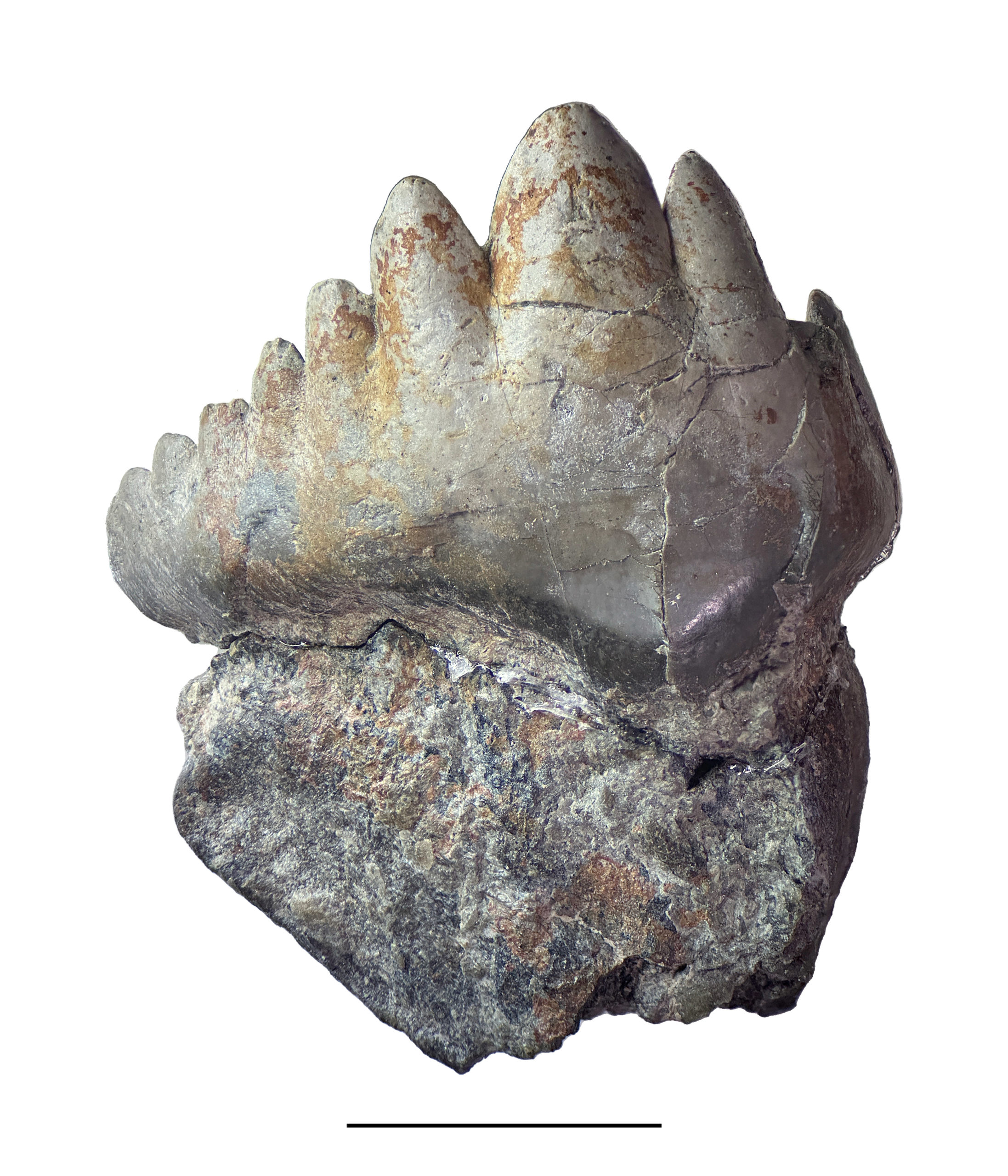Peripristis is a monotypic genus of fish known from Carboniferous rocks, belonging to the Pristodontidae Woodward, 1889. It could be called a form genus, as only isolated teeth are known today. The species semicircularis derives from its curved nature, which represents a portion of a circle. Ginter (2010) and Lund (1989) state that teeth of the Pristodontidae allegedly have denticulate teeth in the upper jaw and lack denticulations in the lower. While some believe they can contrast the top and bottom teeth, Ginter calls the bottom teeth “presumed” and that they have triangular crowns with few to no cusps. If this holds, the specimen below is from the top of the mouth.

Newberry (1875, page 52) reported a tooth from Adams Township, Muskingum County, Ohio. He found the specimen less arched than most but not so much as to separate it from the species. Its known locations included the Carboniferous Limestone of Armagh, Ireland, and Indiana and Illinois in the United States. He placed it under Ctenoptychius rather than Peripristis because they found them synonymous, and the former was the older name.

Newberry discusses a second tooth from the city of Pittsburgh, Pennsylvania. It was a partial crown, said to be flatter than C. semicircularis, with larger symmetrically lance-shaped denticles and covered with fine wrinkles.
References
- Brusatte, S. L., 2007, Pennsylvanian (Late Carboniferous) chondrichthyans from the LaSalle Limestone Member (Bond Formation) of Illinois, USA. Neues Jahrbuch für Geologie und Paläontologie, Abhandlungen, 244(1), 1–8
- Ginter, M. & Hampe, O. & Duffin, C.J., 2010, Handbook of Paleoichthyology, Vol. 3D: Chondrichthyes Paleozoic Elasmobranchii: Teeth Verlag Dr. Friedrich Pfeil, pp. 168, 154 fig., 4 Tab.
- Ivanov, A. O. & Lucas, S.G. & Krainer, K., 2009, Pennsylvanian fishes from the Sandia Formation, Socorro County, New Mexico. New Mexico Geological Society Guidebook, 60th Field Conference, Geology of the Chupadera Mesa Region: 243–248
- Lund, R., 1989, New petalodonts (Chondrichthyes) from the Upper Mississippian Bear Gulch Limestone (Namurian E₂b) of Montana. Journal of Vertebrate Paleontology 9(3):350–368
- Newberry, J. S., 1875, Description of fossil fishes. Report of the Geological Survey of Ohio, 2(2): 1–64
- Woodward, A. S., 1889, Catalogue of the Fossil Fishes in the British Museum (Natural History) Part 1 1–613
- Worthen, A. H., Newbery, J.S., 1866, Geological Survey of Illinois, Vol 2, Paleontology.

